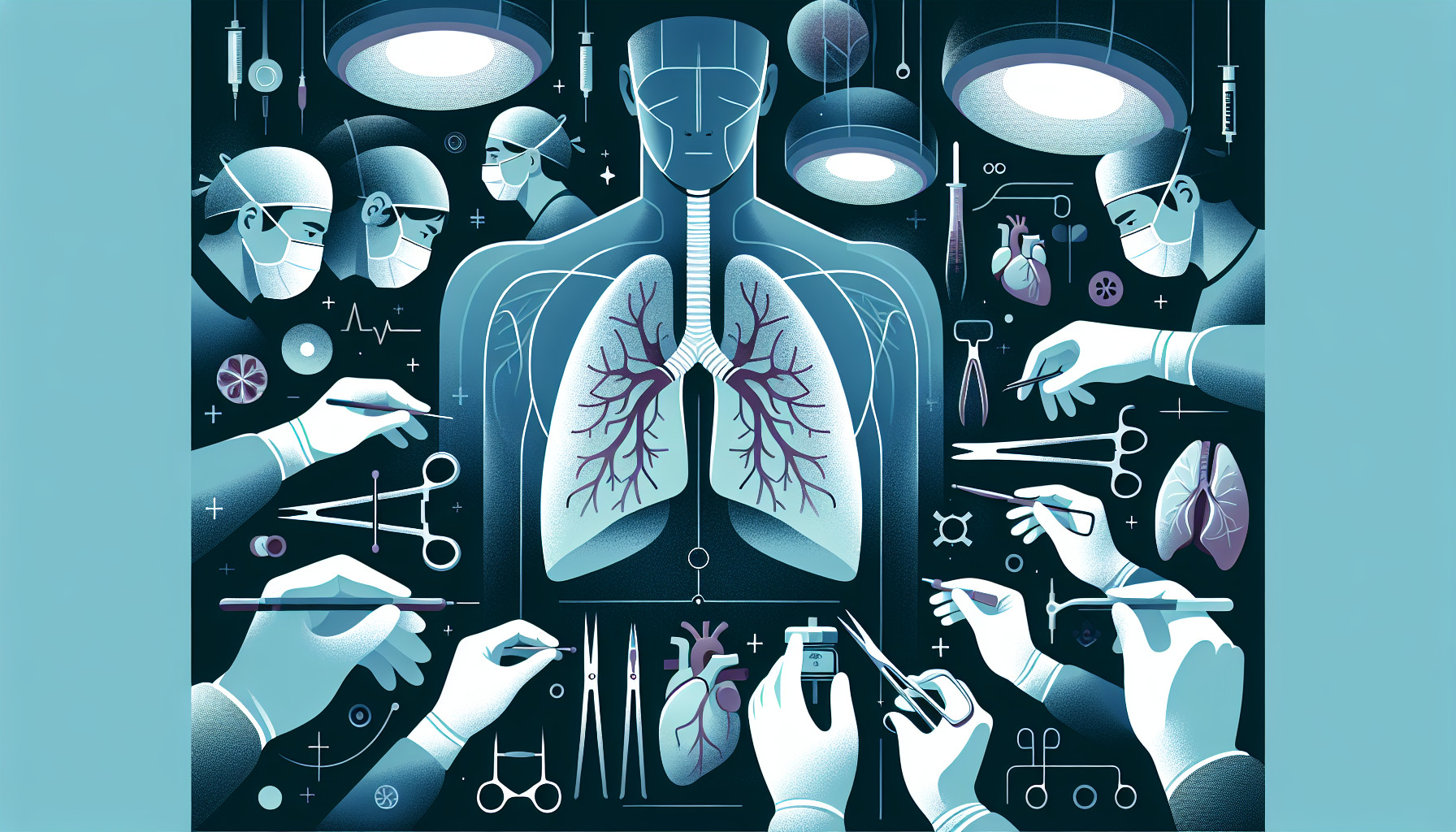Our Summary
This study is examining how to choose the right patients for lung transplants. One way of determining a patient’s overall health and fitness is by looking at the size of certain muscles in their body using a CT scan. A condition called sarcopenia, which is the loss of muscle mass, can be measured by looking at a specific muscle (the psoas muscle) in the body. This has been linked to worse outcomes in lung transplants and other major surgeries. Therefore, it could be a useful way to assess whether someone is a good candidate for a lung transplant.
However, radiologists don’t typically measure this muscle. This study is a preliminary investigation to see how reliable it is for clinicians (non-radiologists) to measure the muscle using a CT scan.
They looked back at CT scans of lung transplant patients taken between 2014 and 2018, and measured the size of the psoas muscle, as well as two other muscles (the paraspinal muscles and the diaphragm pillars). These measurements were done by both clinicians and radiologists, and then compared.
The study found that the clinicians’ measurements were just as good as the radiologists’ for the psoas and paraspinal muscles, but not for the diaphragm pillars.
In conclusion, it seems feasible and reliable for clinicians to measure the psoas and paraspinal muscles using a CT scan in their regular practice. This could be a useful tool in evaluating potential lung transplant patients.
FAQs
- How can the size of certain muscles in the body determine a patient’s overall health and fitness for a lung transplant?
- Why don’t radiologists typically measure the psoas muscle when evaluating lung transplant patients?
- What did the study find in relation to clinicians measuring the size of the psoas and paraspinal muscles versus radiologists?
Doctor’s Tip
Additionally, it is important for patients undergoing a lung transplant to follow a strict medication regimen, attend regular follow-up appointments, and maintain a healthy lifestyle to ensure the success of the transplant. It is also crucial to avoid exposure to tobacco smoke, pollutants, and other harmful substances that can damage the new lungs. Adhering to these recommendations can help improve the chances of a successful outcome after a lung transplant.
Suitable For
Typically, patients who are recommended for a lung transplant are those who have end-stage lung disease and have exhausted all other treatment options. This includes individuals with conditions such as cystic fibrosis, chronic obstructive pulmonary disease (COPD), idiopathic pulmonary fibrosis, and pulmonary hypertension. Patients must also meet specific criteria, including being relatively young and otherwise healthy aside from their lung condition, having a good support system, and being able to adhere to the rigorous post-transplant medication and rehabilitation regimen.
Additionally, potential lung transplant candidates are evaluated based on their overall health and fitness level, as well as their ability to withstand the rigors of surgery and the post-transplant recovery process. The study mentioned above suggests that assessing muscle mass using a CT scan could be a valuable tool in determining the suitability of a patient for a lung transplant. By measuring specific muscles, clinicians can get a better understanding of a patient’s overall health and potential for successful outcomes following transplant surgery.
Timeline
- Patient is referred to a transplant center by their healthcare provider after being diagnosed with end-stage lung disease
- Patient undergoes a series of tests and evaluations to determine if they are a suitable candidate for a lung transplant, including blood tests, imaging studies, pulmonary function tests, and psychological evaluations
- If approved for a transplant, patient is placed on the transplant waiting list and waits for a suitable donor
- Patient receives a call that a suitable donor has been found and undergoes the lung transplant surgery
- After surgery, patient is closely monitored in the hospital for complications and recovery
- Patient begins a rigorous rehabilitation program to regain strength and lung function
- Patient is discharged from the hospital and continues to be monitored closely by their healthcare team
- Patient must take immunosuppressant medications for the rest of their life to prevent rejection of the transplanted lung
- Patient attends regular follow-up appointments with their transplant team to monitor their progress and overall health.
What to Ask Your Doctor
- What is the significance of measuring muscle size, specifically the psoas muscle, in evaluating my eligibility for a lung transplant?
- How does sarcopenia (loss of muscle mass) impact outcomes for lung transplant patients?
- Can you explain the process of measuring muscle size using a CT scan and how this information will be used in determining my suitability for a lung transplant?
- How do the measurements of muscle size done by clinicians compare to those done by radiologists in terms of accuracy and reliability?
- Will the results of the muscle size measurements affect my placement on the lung transplant waitlist or my overall transplant candidacy?
Reference
Authors: Zappella N, Vaillant G, Saker L, Kantor E, Mordant P, Messika J, Bunel V, Khalil A, Tran Dinh A, Montravers P. Journal: Respir Med. 2022 Sep;201:106926. doi: 10.1016/j.rmed.2022.106926. Epub 2022 Jul 5. PMID: 35930917
